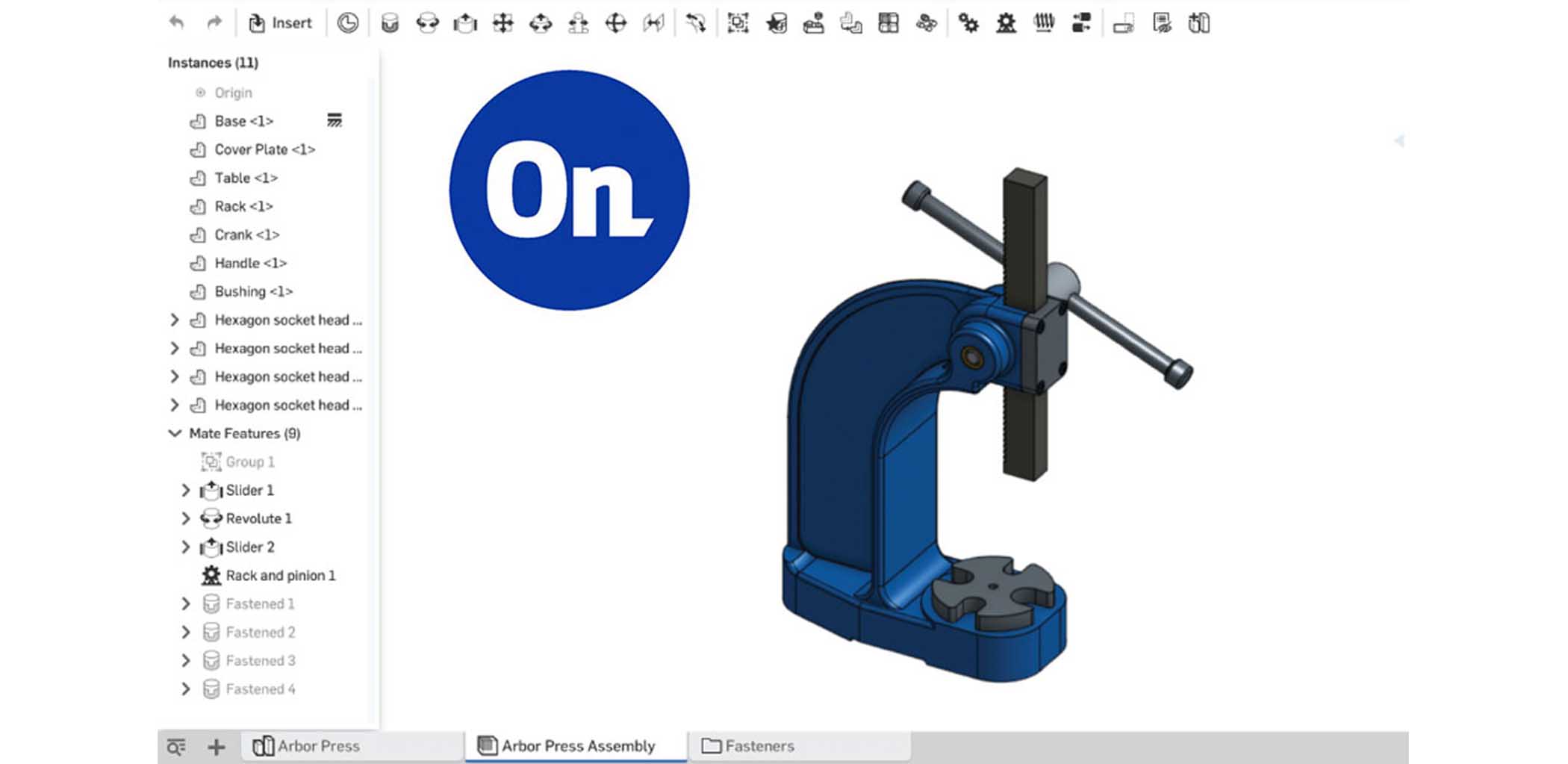Onshape Product Design

Onshape is cloud-based 3D CAD application that runs in the web-browser. During the summer of 2018 I was an intern on their product design and UX team, conducting usability testing with customers to inform the design of workflows and interfaces for CAD features including assembly mates, in-context assembly editing, release management, and drawing properties. As an intern I had the opportunity to be a lead UX designer on projects relating to all of these features, coordinating deadlines with developers and providing them with user feedback and UX specification sheets to inform their work. At Onshape I developed core skills in usability testing, detail-oriented UX design, designing assemblies in Onshape, working in agile sprints, and employing user-centered design methods.
UI Design - Drawing Properties Panel
One of the projects that I worked on was the design of the new drawing properties panel. The goal of the project was to provide more options for customizing engineering drawings, and I had the opportunity to make changes to the initial design based on observations from usability testing I conducted. Because Onshape is web-based, I sent Onshape customers a unique login to a demo build of Onshape with new features. In the usability test, I provided users with a drawing and asked them to modify different settings. Onshape developers sat in on the call silently in the "observation room," watching the results of the test. From the tests we developed a list of key observations, and identified the top changes that needed to be made.
We learned through testing of the drawing properties panel how user's expected to find the panel in the application, how they expected certain settings to modify the drawing, and how they expected to find those settings across several tabs. The way users engaged with changing line thicknesses and font sizes changed based on usability testing. We found that users generally preferred drop down menus for settings such as changing line thicknesses, and that the initial set of values provided was too large and redundant. I then redesigned the grouping of settings, separating options for changing dual units and precision into a separate sub-section rather than the original grouping of like-settings ("Units," "Dual Units," "Precision," "Dual Precision," etc.). I also improved menu readability, redesigning it in Sketch with clearly marked headers, larger navigation tabs, and a larger title font. Many of these projects offered the opportunity to think in extreme detail about the kinds of interactions users would have with the software as they click through options and menus. I conducted similar work on in-context assemblies, display states, and other features that have yet to be released.

Workflow Design - Release Management Systems
The largest project I worked on during the internship was to reimagine Onshape's release management feature for updating part, drawing, and assembly revisions. Improving release management was Onshape's second highest priority project for 2018. Driven by customer feedback and UX test observations, I developed a list of major expectations for the feature, mapped out common workflows, and redesigned elements of the UI in Sketch concerning data visibility. While the project was much larger than a summer project, I provided Onshape a clear outline of customer expectations and workflows that the company is continuing to use.
When something is "released" Onshape saves a version of that item, indicating the design is frozen and ready for suppliers, manufacturers, and others. I conducted usability testing with people in all of these roles to develop a list of expectations from all the core user groups that engage with released data. I asked them to walk through a project I had already designed with several released parts and drawings that they needed to locate. While Onshape allows extreme flexibility in how people organize their designs, I recognized from usability tests that it can hinder the experience of finding released data. A document can contain tabs with parts, assemblies, and drawings in it. Some engineers make entire projects in one document, while others only make one part per document and combine it all into a document containing an assembly. This flexibility makes designing parts intuitive for engineers, but makes finding the released version very difficult for other engineers, suppliers, purchasing managers, etc. who are unfamiliar with the project structure.
Some of the designs I developed to improve release management were simple fixes, such as adding the ability to show only released parts in the tab manager. Other problems we identified are larger problems with the architecture of the feature that require significant rethinking. One design exercise I employed was to take a step back and think about what attracts people to the feature and how they enter, engage, and exit their interaction with it. Doing so allowed me to first decouple release management from the rest of the application and consider what matters most to people (what attracts them to the idea of release management), and second to put it back in context, thinking about what buttons people click, where they're located, etc. The exercise helped me see how the implementation of the feature both helps and hinders its original intent. I left Onshape having compiled a list of key design considerations for each major user group engaging with release management and a write-up capturing my thoughts on what needed to change based on my usability testing and insights.
